 Instead of just looking for current life on Mars, Arizona State University professor Jack Farmer thinks that future missions should also be looking for ancient fossils on the Red Planet. In fact, he thinks they might be easier to find.
Instead of just looking for current life on Mars, Arizona State University professor Jack Farmer thinks that future missions should also be looking for ancient fossils on the Red Planet. In fact, he thinks they might be easier to find.
Continue reading “Martian Explorers Should Be Looking for Fossils”
NASA’s THEMIS Mission Blasts Off
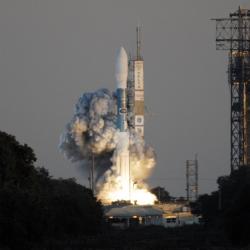 NASA’s THEMIS mission was blasted into space on Saturday, February 17 atop a Delta II rocket. THEMIS stands for Time History of Events and Macroscale Interactions during Substorms, and it’s comprised of 5 separate spacecraft.
NASA’s THEMIS mission was blasted into space on Saturday, February 17 atop a Delta II rocket. THEMIS stands for Time History of Events and Macroscale Interactions during Substorms, and it’s comprised of 5 separate spacecraft.
Continue reading “NASA’s THEMIS Mission Blasts Off”
Lasers Could Deflect Future Asteroids From Impacting Earth
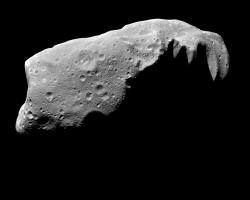 The Earth has been bombarded by asteroids in the past, and it’s going to happen again in the future. It’s not a question of “if”, it’s a question of “when”. Keenly aware of the problem, scientists are working on strategies that could prevent an asteroid with Earth in its cross hairs from impacting us.
The Earth has been bombarded by asteroids in the past, and it’s going to happen again in the future. It’s not a question of “if”, it’s a question of “when”. Keenly aware of the problem, scientists are working on strategies that could prevent an asteroid with Earth in its cross hairs from impacting us.
Continue reading “Lasers Could Deflect Future Asteroids From Impacting Earth”
Exoplanet is Hot and Dry
 Astronomers working with the Spitzer Space Telescope announced a tremendous new advance today, when they used the great observatory to successfully analyze the atmosphere of two distant planets. This is an enormously important discovery, and we’ll deal with the implications of this in a second.
Astronomers working with the Spitzer Space Telescope announced a tremendous new advance today, when they used the great observatory to successfully analyze the atmosphere of two distant planets. This is an enormously important discovery, and we’ll deal with the implications of this in a second.
Continue reading “Exoplanet is Hot and Dry”
NASA’s Next Probe Should Visit Europa
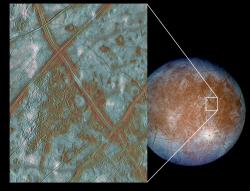 Arizona State University professor Ronald Greeley thinks that NASA’s next flagship mission to the outer planets should be sent to Europa, to help determine if the Jovian moon is a good place to search for life. Greeley presented his rationale at the annual meeting of the American Association for the Advancement of Science in San Francisco.
Arizona State University professor Ronald Greeley thinks that NASA’s next flagship mission to the outer planets should be sent to Europa, to help determine if the Jovian moon is a good place to search for life. Greeley presented his rationale at the annual meeting of the American Association for the Advancement of Science in San Francisco.
Continue reading “NASA’s Next Probe Should Visit Europa”
Rosetta Approaches its Mars Flyby
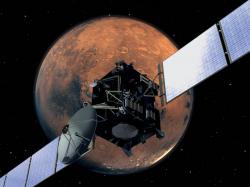 If you’re waiting for the Rosetta mission to really pay off, you’re going to need a lot of patience. The ESA spacecraft isn’t due to meet up with its target, Comet 67P Churyumov Gerasimenko, until 2014. But there’s a little science coming on February 25th, when the spacecraft swings by Mars.
If you’re waiting for the Rosetta mission to really pay off, you’re going to need a lot of patience. The ESA spacecraft isn’t due to meet up with its target, Comet 67P Churyumov Gerasimenko, until 2014. But there’s a little science coming on February 25th, when the spacecraft swings by Mars.
Continue reading “Rosetta Approaches its Mars Flyby”
New Survey of the Gamma Ray Skies
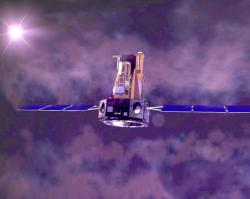 ESA’s Integral spacecraft has released a new survey of the sky, seen in gamma rays – the most energetic radiation we know of. This latest survey brings the total sky coverage to 70%.
ESA’s Integral spacecraft has released a new survey of the sky, seen in gamma rays – the most energetic radiation we know of. This latest survey brings the total sky coverage to 70%.
Continue reading “New Survey of the Gamma Ray Skies”
What’s Up this Week: February 19 – February 25, 2007
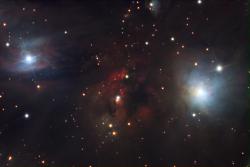 Monday, February 19 – Today is the birthday of Nicolas Copernicus. Born in 1473, he was the creator of the modern solar system model which illustrated the retrograde motion of the outer planets. Considering this was well over 530 years ago, and in a rather “unenlightened” time, his revolutionary thinking about what we now consider natural is astounding.
Monday, February 19 – Today is the birthday of Nicolas Copernicus. Born in 1473, he was the creator of the modern solar system model which illustrated the retrograde motion of the outer planets. Considering this was well over 530 years ago, and in a rather “unenlightened” time, his revolutionary thinking about what we now consider natural is astounding.
Continue reading “What’s Up this Week: February 19 – February 25, 2007”
Podcast: The Fermi Paradox: Where are all the Aliens?
 We live in a mind bogglingly big Universe filled with countless stars. We know intelligent life evolved here on Earth. It must be common across the Universe, right? But if there’s life out there, how come we haven’t been visited by aliens yet? Why haven’t we even picked up signals from alien television stations? Where’s all the life?
We live in a mind bogglingly big Universe filled with countless stars. We know intelligent life evolved here on Earth. It must be common across the Universe, right? But if there’s life out there, how come we haven’t been visited by aliens yet? Why haven’t we even picked up signals from alien television stations? Where’s all the life?
Continue reading “Podcast: The Fermi Paradox: Where are all the Aliens?”
Chandra Gives Another Look at the Pillars of Creation
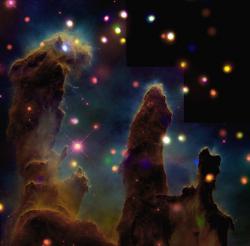 Probably the most famous photograph every taken by the Hubble Space Telescope is of the “Pillars of Creation”; a star forming region inside the Eagle Nebula (aka M16). Astronomers have wanted to know just how much star formation is actually going on inside the nebula.
Probably the most famous photograph every taken by the Hubble Space Telescope is of the “Pillars of Creation”; a star forming region inside the Eagle Nebula (aka M16). Astronomers have wanted to know just how much star formation is actually going on inside the nebula.
Continue reading “Chandra Gives Another Look at the Pillars of Creation”
